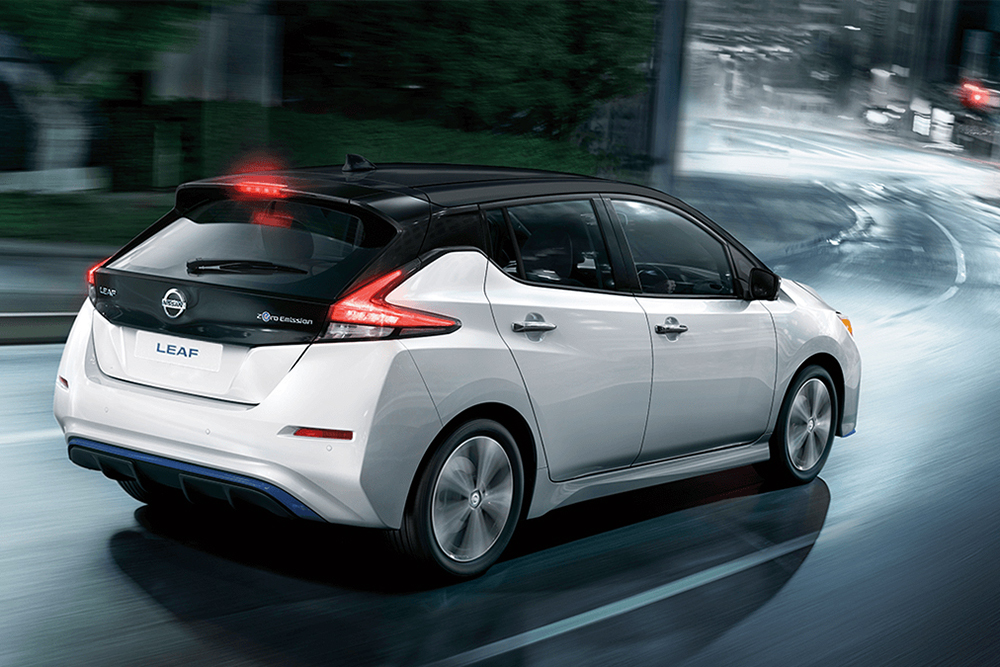
The introduction of the Nissan Leaf to our market has made a lot of us giddy with excitement. Finally, we have a mass-market electric vehicle that we can own and drive around in without having to rely on the occasional Tesla imports.
Besides the fully electric drivetrain of the Leaf, it’s packed to the brim with features and creature comforts. I won’t bore you with the details as this has been discussed extensively on launch day, but a detail often brought up but barely explored is how much it costs.
The P2,798,000 price tag is no chump change to most of us, but it doesn’t tell the whole story. Nissan claims—and rightly so—that electric vehicles are cheaper to maintain, and that the whole charging affair is a break from the periodic gasoline stops that we’ve been accustomed to. But do those things alone justify the high initial cost of the Leaf?
First, we need to discuss how we can compare the new EV to our current internal-combustion engines. We’ll be comparing the Nissan Leaf to the Toyota Corolla Altis 1.6V CVT, given that the Altis has a healthy set of comparable features and is a great city car that’s a step above the common vehicles we see plying our roads today. Sam Surla, our visual editor, also happens to drive a 2014 Corolla Altis regularly, so we have fuel consumption figures we can compare with.
As I mentioned, the Leaf goes for P2,798,000, while the Corolla Altis 1.6V CVT costs P1,230,000.
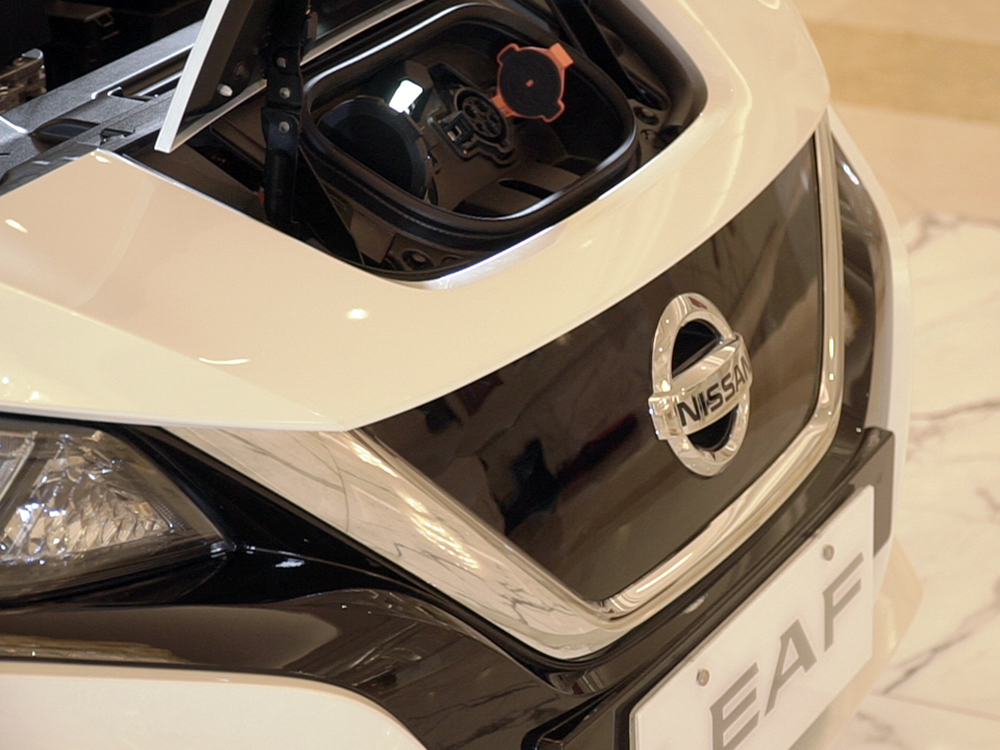
It’s rather obvious that EVs don’t use fuel so we can’t directly compare gas mileage figures, but it’s easy to draw a comparison between electric vehicles and our prehistoric oil-drinking rides provided you pay attention to the units and the quirks of EVs.
The amount of energy a battery can store is often measured in kilowatt-hours (or how many hours a battery can supply one kilowatt). This is roughly equivalent to our fuel tanks, where the amount of energy stored (or fuel) is measured in liters.
Fuel consumption figures are often put in kilometers driven per liter of fuel consumed (km/L). This can be computed using some basic math and the odometer at the gasoline station. Or you can—for the sake of convenience but at the expense of slightly inaccurate figures—also read directly from the trip computer on your instrument cluster.
Electric consumption can be computed similarly. We’ll be using the advertised range and capacity of the Leaf, which is the NEDC figure of 311km on its 40kWh battery. Dividing the battery capacity by its range, we end up with a figure that describes the distance you can travel per unit of energy. However, not all of the electricity drawn from the wall ends up in the battery due to inefficiencies in our modern-day electronics. The Leaf manages a very respectable 85% efficiency from independent testing, and adjusting for this means that a full zero-to-100% charge on the Leaf takes up 47kWh of wall power.
Meanwhile, Sam manages 8km/L on the Altis, while the Leaf works out to 6.62km/kWh.
The Nissan Leaf’s P2,798,000 price tag is no chump change to most of us, but it doesn’t tell the whole story
We can’t directly compare these two numbers as they use very different energy sources and units, but we can use them to figure out how much these two vehicles cost to drive.
We all know how much gasoline costs; its price per liter is advertised on signboards at every fuel station in the country. Meralco also publishes its electricity costs as price per kilowatt-hour. For the purposes of comparison, we’ll be using a reasonable average of P50/L for gasoline, and Meralco’s May 2021 residential rate of P8.59/kWh. We can simply divide the fuel and electricity consumption by these figures to arrive at P6.25/km for the Altis, and P1.29/km for the Leaf.
The cost savings don’t stop there, as electric vehicles don’t need as much maintenance as their ICE counterparts. While both cars require regular inspection and replacement of wear items such as tires, brake fluid and brake pads, ICE vehicles require regular oil, filter and spark plug changes that EVs don’t. Our very rough estimates peg EVs at around P7,000/10,000km and ICEs at P15,000/10,000km, taking into account inspections, oil changes, and tire replacements. Your actual costs will definitely vary, but this seems like a healthy estimate for our comparison.
So now that we have all these values, let’s put them together.
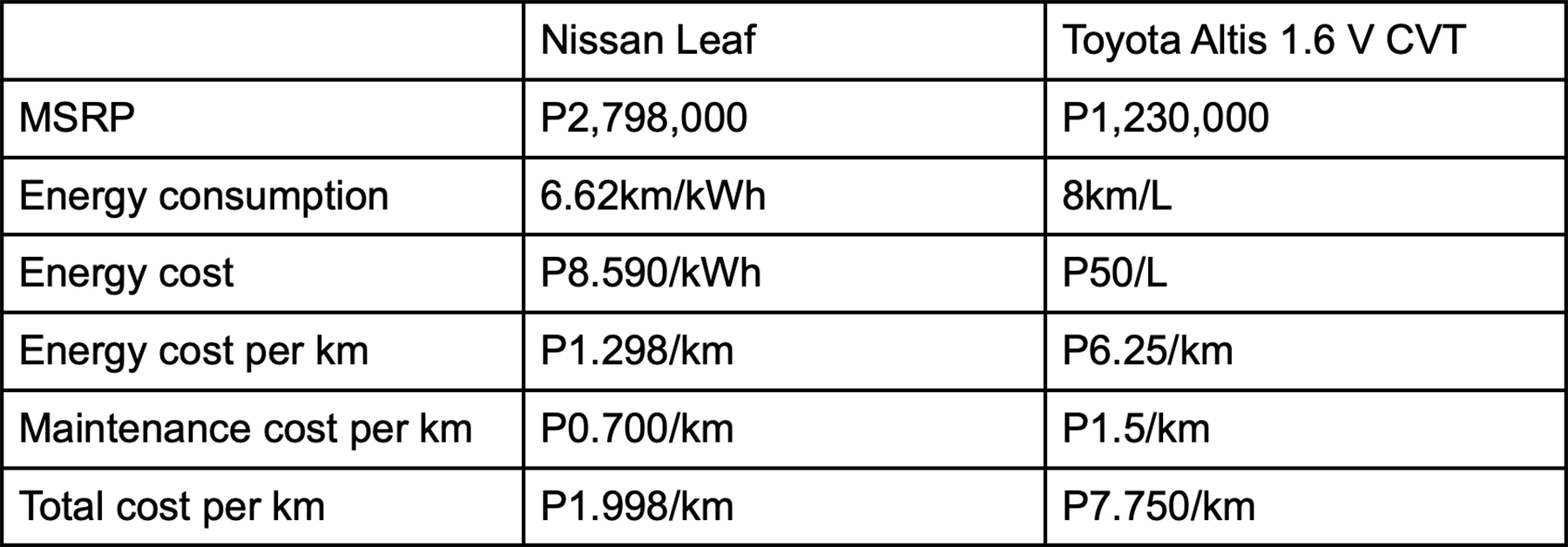
Assuming a weekly 30km round-trip commute for 52 weeks in a year, our running costs amount to the following figures:

Nearly half a million bucks saved in running costs over a 10-year period sounds incredible, but let’s see what happens if we add on the cost of the vehicle itself.

It turns out that the Leaf still costs more overall despite the huge savings in running costs. A little bit of algebra reveals that, to break even, both vehicles would have to be driven 272,608km before the Leaf nets savings versus the total cost of ownership as compared to the Corolla Altis. Even if you relied exclusively on Nissan’s free EV charging stations, that break-even distance is still going to be at 222,411km. The Leaf’s battery does come with an eight-year/160,000km warranty, and stories of units hitting 150,000 miles (240,000km) are not unheard of. Whether the Leaf would last long in your hands to start saving you money is likely a question you’ll have to ponder on yourself.
The Leaf’s introduction to the market is a welcome sight, and a hopeful sign for more electric vehicles rolling on our roads in the future. Nissan isn’t playing around either, supplementing our lack of EV infrastructure greatly by having quick-charge points at select dealers, allowing for the range that we’re accustomed to with our dinosaur-juice vehicles.
Given the high initial cost of the Leaf and the running costs that put it barely at par with our current ICE vehicles, I personally don’t feel enough of a push to make me want to jump ship just yet. It needs to bring something truly game-changing to the table—something worth the investment it is asking for. But maybe a comparison simply can’t be drawn based on cost savings alone. After all, we petrolheads know that the experience of driving special vehicles can be hard to put a price on.

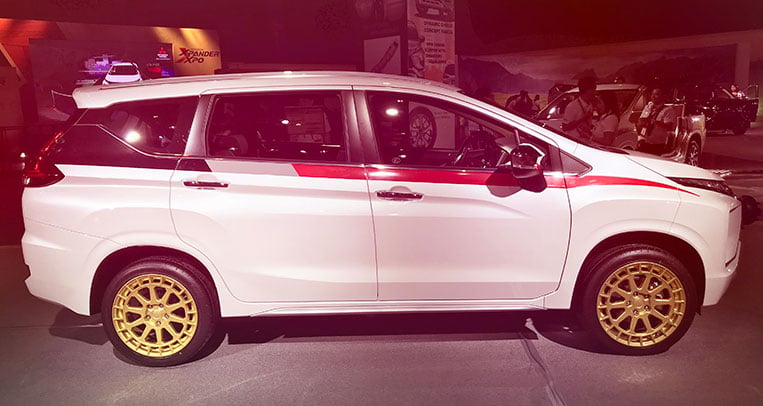
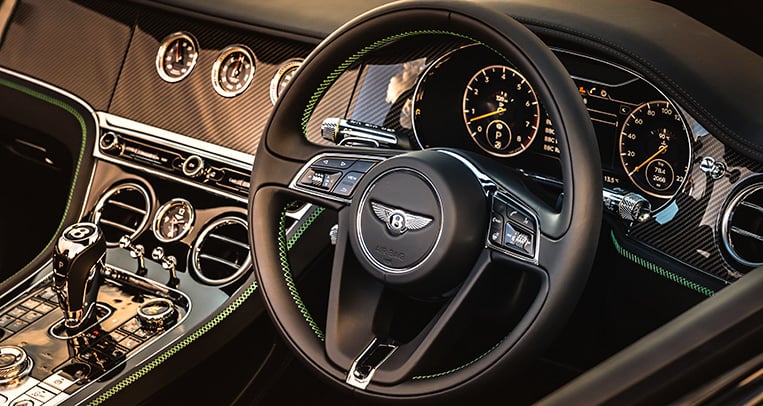
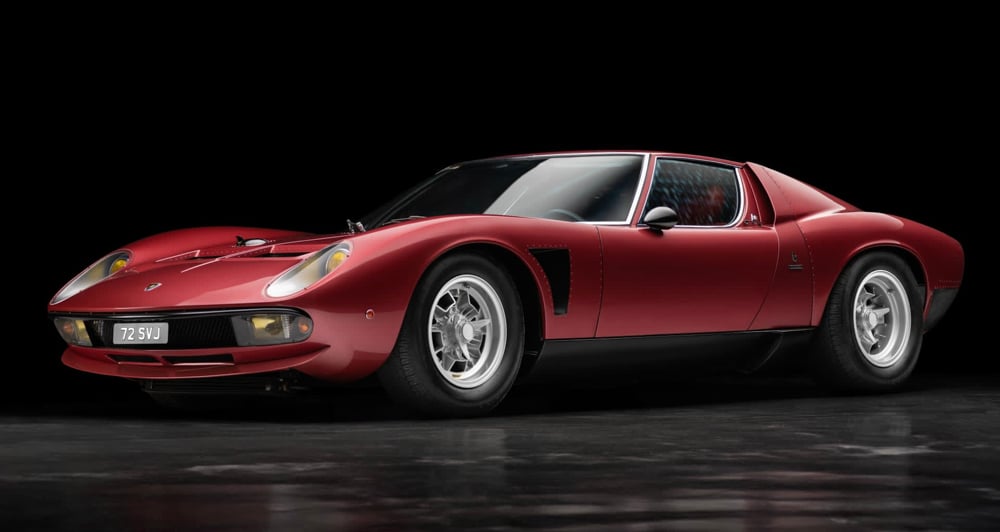







Comments